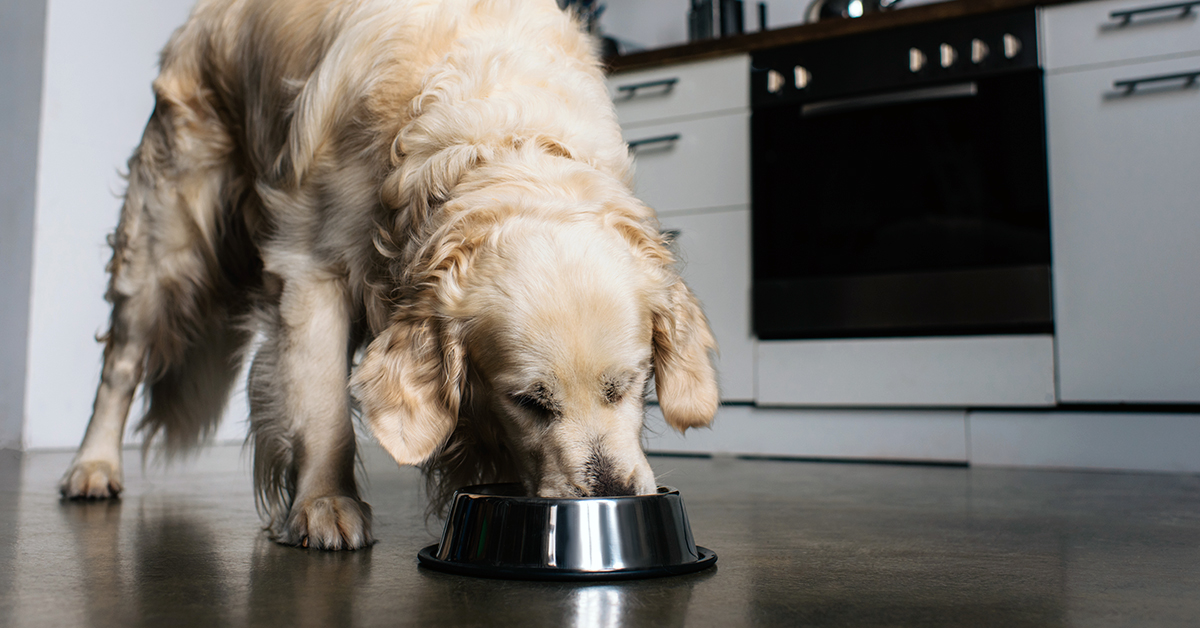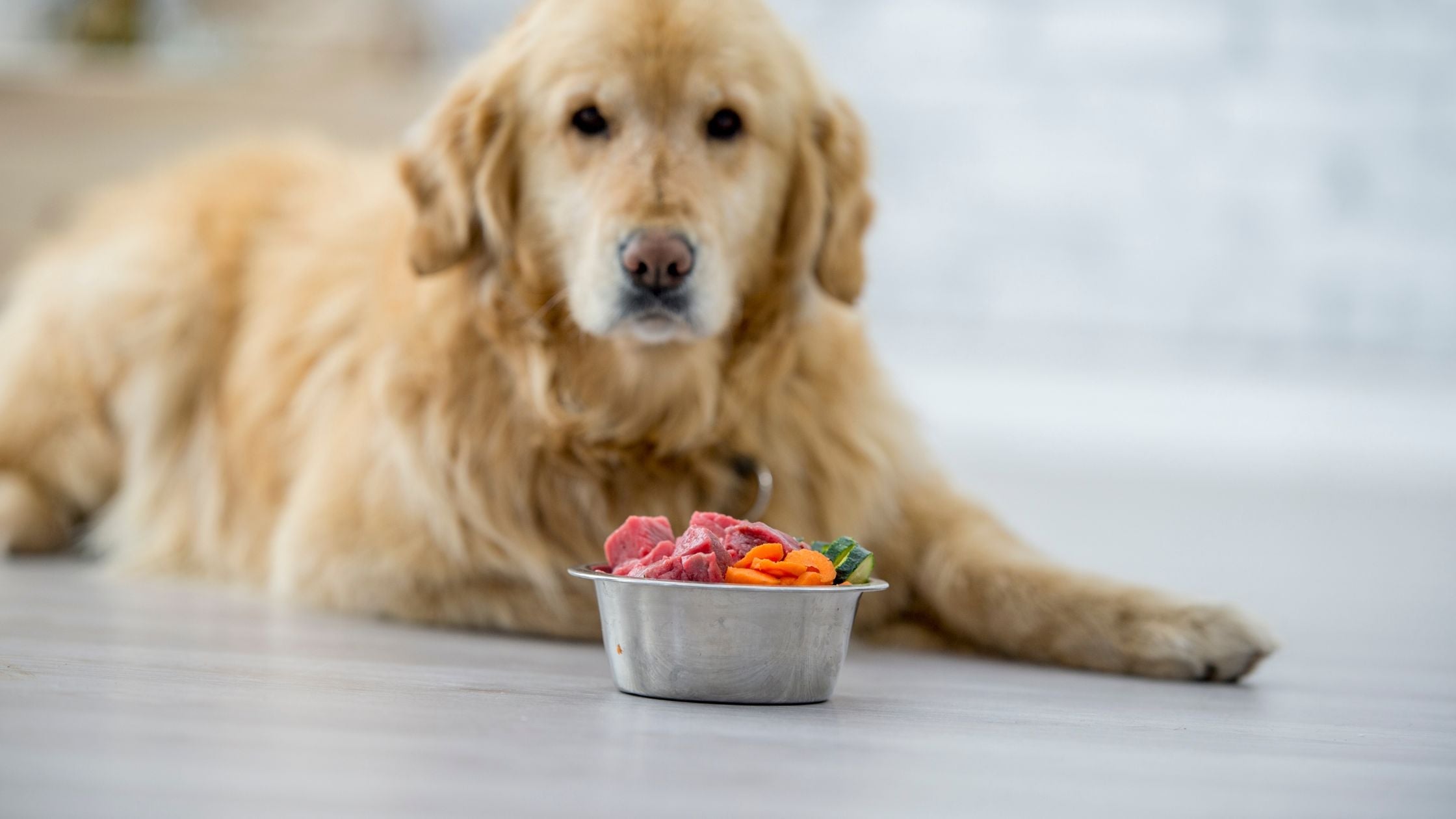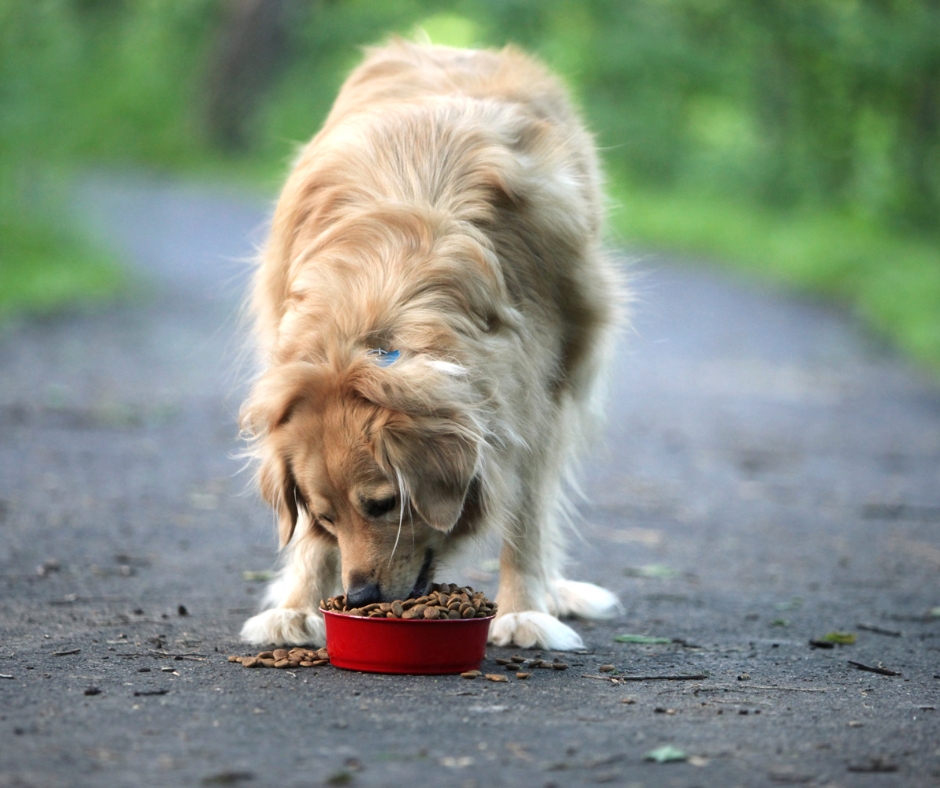Choosing the Right Dog Food when The age, size, and particular health requirements of your dog must all be taken into account. For individualized advice, speak with your vet.
Choosing the Right Dog Food: Guide for Pet owners health and wellbeing depend on the food for them. Due to variables including age, breed, size, and medical issues, every dog has different nutritional needs. While adult dogs need balanced diets to be healthy, puppies need food that is high in nutrients to assist their development.
Food that promotes mobility and joint health is beneficial for senior dogs. To make sure the product satisfies nutritional requirements, always check the labels. Proper protein levels, essential vitamins, and high-quality components are essential. Making educated decisions by speaking with your veterinarian can assist in maintaining the health and happiness of your pet.
Dog Food Types
Choosing the Right Dog Food: Guide for Pet Owners The health of depends. A variety of dog food varieties are available. Every kind has advantages of its own. Being aware of these may help you make an informed decision.
Dry Kibble
One of the most often used kinds of dog food is dry kibble. It is simple to store and handy. Your dog’s teeth stay cleaner when you feed them dry kibble. In general, it is also less expensive. Numerous brands provide a range of nutritional profiles and tastes.
Wet Food in Cans
Another common choice is canned food that has been wet. It helps keep your dog hydrated because of its high moisture content. For finicky eaters, wet food tends to taste better. Compared to dry kibble, it might be more costly. Make sure the brand you choose has the right nutrients.
The Raw Diet
Raw meat, bones, fruits, and vegetables are all part of a raw diet. It is said to be healthier and more natural. Your dog’s coat and energy levels may both be enhanced by eating raw food. To prevent bacterial contamination, they must be handled carefully. Before beginning a raw diet, speak with a veterinarian.
Prepared Meals at Home
Some pet owners prefer home-cooked meals. Complete control over the ingredients is possible with this option. The meals may be customized to meet your dog’s individual requirements. Cooking at home takes time and work. Make sure your diet has all the nutrients it needs to stay balanced.
A brief comparison of various dog food varieties is provided below:
Dry Kibble
- Benefits: Convenient, Affordable, Dental Health
- Considerations: Less Moisture
Wet Canned Food
- Benefits: High Moisture, Palatable
- Considerations: More Expensive
Raw Diet
- Benefits: Natural, Healthy Coat
- Considerations: Risk of Contamination
Homemade Meals
- Benefits: Customized, Control Over Ingredients
- Considerations: Time-Consuming

Examining the Labels of Choosing the Right Dog Food
The health of your pet depends on the dog food you choose. Reading the labels of dog food is one crucial ability. Knowing labels may aid in making informed decisions. Let’s examine the main features of dog food labeling.
List of Ingredients
The contents of the dog food are listed in the ingredient list. By weight, the ingredients are listed. Typically, the first element is the most prevalent. Choose high-quality protein sources, such as beef or chicken. Steer clear of foods that include soy or corn fillers. These are not very nutrient-dense.
Information on Nutrition
The nutrients in the food are included in the nutritional information. Protein, fat, fiber, and hydration are all included in this. Verify that the proportions of fat and protein are balanced. Compared to adult dogs, puppies need more protein. Verify if the meal satisfies your dog’s particular requirements.
- Protein: 18-30%
- Fat: 8-20%
- Fiber: 1-8%
- Moisture: 10-12%
Standards of Aafco
The meal satisfies certain requirements thanks to the AAFCO standards. The Association of American Feed Control Officials is known by its acronym, AAFCO. Look for a statement stating that the meal satisfies AAFCO requirements. This indicates that it offers comprehensive and well-rounded nourishment.
The following might be the AAFCO statement: “This food is formulated to meet the nutritional levels established by the AAFCO Dog Food Nutrient Profiles.”
Taking Your Dog’s Age into Account
The age of your dog will determine which dog food is best for them. Dogs’ dietary requirements vary depending on their stage of life. Eating well keeps kids active and healthy. The particular requirements for pups, adult dogs, and elderly dogs will be discussed.
Nutrition for Puppies
Puppies need a diet high in fat and protein since they develop quickly. Compared to adult dogs, they need more calories. Seek out meals that have been specially prepared for pups. These nutrients help them grow and develop quickly.
- 1 High-protein
- High in Fat
- Vital Minerals and Vitamins
DHA is an omega-3 fatty acid that is often found in puppy chow. DHA promotes the development of the brain and eyes. Make sure the amounts of calcium and phosphorus in the meal are balanced. This is essential for bone formation.
Needs of an Adult Dog
A balanced diet is necessary for adult dogs to be healthy and energetic. The proper proportions of fat, carbs, and protein should be included in their diet. Antioxidants and other nutrients are included in high-quality adult dog food.
- Protein: Muscle maintenance and repair.
- Fat: Energy and healthy coat.
- Carbohydrates: Energy and digestion.
- Vitamins & Minerals: Overall health and well-being
Steer clear of meals that include artificial additives and fillers. These may be detrimental to your dog’s health. Select premium components for your adult canine.
Diet for Senior Dogs
The nutritional requirements of elderly dogs vary. They often need more fiber but fewer calories. This keeps you from gaining weight and aids with digestion.
- Low Calorie
- High Fiber
- Joint Supplements
Keep an eye out for meals that have joint supplements added. Joint health is supported by components like chondroitin and glucose. Senior dog food contains antioxidants that strengthen the immune system.
Before altering your dog’s food, always get advice from your veterinarian. They may provide tailored guidance according to the age and health of your dog.
Particular Nutritional Requirements Choosing the Right Dog Food
Choosing the Right Dog Food: Guide for Pet Owners The health of your pet depends. Each dog has different nutritional requirements. Certain dogs have medical issues that need particular diets.
Allergies to Food
Certain dietary additives cause allergies in certain dogs. Dairy, chicken, and beef are common allergies. Food allergies may cause symptoms such as:
- Skin that itches
- Digestive problems
- Infections of the ears
Take into consideration an elimination diet if your dog exhibits these symptoms. This entails taking possible allergens out of their diet. To find the offender, reintroduce them gradually.
Controlling Weight
Dog obesity may cause major health issues. Controlling your dog’s weight is essential. Regular exercise and a healthy diet are essential. Keep an eye out for dog food that is branded “weight management.” These foods have less fat and calories. Additionally, they include more fiber, which will keep your dog feeling fuller for longer.
Health Issues
Certain dogs need particular diets because of their medical issues. Certain diets are necessary for conditions including diabetes, renal illness, and heart disease. For advice on selecting the best food, speak with your veterinarian. They could suggest a diet that is prescribed. Here is a brief synopsis:
- Diabetes: Low in sugar, high in fiber
- Kidney Disease: Low in protein and phosphorus
- Heart Disease: Low in sodium
For your dog’s health, always heed the advice of your veterinarian. The proper nutrition might have a big impact on their quality of life.
Selecting Superior Ingredients Choosing the Right Dog Food
Selecting the right dog food is essential. Using high-quality ingredients keeps your dog happy and healthy. Pay attention to the vital nutrients your dog needs. This comprises vitamins, minerals, healthy fats, and protein. To assist you in making the best decision, let’s examine these factors.
Sources of Protein
For your dog to develop and have healthy muscles, protein is essential. Seek out dishes that include actual meat as the primary component. Steer clear of fillers like soy, maize, and byproducts.
- Chicken: Dogs like this lean protein source.
- Beef: rich in vital amino acids.
- Fish: Fatty acids are abundant in fish.
Good Fats
Fats keep your dog’s coat glossy and provide them energy. Make sure the meal contains sources of healthy fat. Steer clear of trans fats.
- Fish oil promotes the health of the skin and coat.
- Flaxseed Oil 3 fatty acids are abundant in flaxseed oil.
- Chicken fat is a delicious and easily absorbed fat.
Vital Minerals and Vitamins
Vitamins and minerals support your dog’s general health. They prevent deficits and strengthen the immune system
Vitamin A
- Benefits: Good vision and immune function.
- Sources: Carrots, sweet potatoes
Calcium
- Benefits: Strong bones and teeth.
- Sources: Dairy products, fish
Iron
- Benefits: Healthy blood cells.
- Sources: Red meat, spinach

Steer Clear of Dangerous Additives Choosing the Right Dog Food
Choosing the Right Dog Food: Guide for Pet Owners The health of depends. One important consideration is avoiding dangerous chemicals. Additives may be detrimental to your dog’s health. You’ll learn in this part how important it is to stay away from artificial flavors, colors, fillers, and preservatives.
Synthetic Preservatives
Dog food has a longer shelf life thanks to artificial preservatives. However, they may result in health problems. Ethoxyquin, BHA, and BHT are examples of common artificial preservatives. These substances have the potential to be harmful. Allergies, skin issues, and even cancer might result from them. Always look for these dangerous substances on labels. Choose organic preservatives such as vitamin C and vitamin E.
Flavors and Colors
Dog food looks and tastes good thanks to artificial coloring and flavoring. However, they are nutritionally worthless. They may cause hyperactivity and allergic responses. Seek out dog food that has natural tastes and colors. Safe substitutes include things like turmeric and beet juice. Products with labels that read “Blue 2, Red 40, or Yellow 5” should be avoided.
Fillers
Dog kibble is bulked out with inexpensive materials called fillers. They are deficient in vital nutrients. Soy, wheat, and corn are common fillers. These may result in allergies and digestive problems. Select dog food made with premium ingredients. Choose whole grains, meat, and veggies. For a healthy life, your dog requires balanced food.
Artificial Preservatives
- Health Risks: Allergies, Skin Problems, Cancer
- Safer Alternatives: Vitamin E, Vitamin C
- Examples: BHA, BHT, Ethoxyquin
Colors and Flavors
- Health Risks: Allergic Reactions, Hyperactivity
- Safer Alternatives: Beet Juice, Turmeric
- Examples: Blue 2, Red 40, Yellow 5
Fillers
- Health Risks: Digestive Issues, Allergies
- Safer Alternatives: Meat, Vegetables, Whole Grains
- Examples: Corn, Wheat, Soy
Quality vs. Cost
The health of your pet depends on the dog food you choose. The balance between price and quality is one important consideration. Purchasing premium dog food may result in improved health. However, it may also be costly. To assist you in navigating the choices, below is a tutorial.
Options That Are Affordable
There are many affordable dog food alternatives. These might provide vital nutrients at an affordable price. Seek out companies that provide balanced and comprehensive diets. Look for protein sources like beef or chicken in the ingredients list. Steer clear of foods that include soy or corn fillers.
- Dry kibble is often less expensive.
- Food in a can may be a wise option.
- To save money, think about purchasing in bulk.
High-end brands
Higher-quality ingredients are often used in premium products. These may consist of actual meat, fruits, and veggies. They often stay away from artificial additives and preservatives. Your dog may benefit from improved digestion and a healthier coat as a result.
- Brand A: Grain-free, high protein, real meat
- Brand B: Organic ingredients, no artificial preservatives
- Brand C: Holistic formula, added vitamins
Striking a Balance
Finding a balance between price and quality is feasible. Seek reasonably priced solutions that are nutritious. Examine reviews and compare brands. Consult your veterinarian for suggestions.
- Look for premium ingredients on labels.
- Steer clear of meals with excessive fillers.
- Take into account the nutritional requirements of your dog.
Purchasing the appropriate dog food might help your pet’s health. It may also help you save money on veterinary care. Make sensible decisions to ensure the happiness and well-being of your pet.
Making the Switch to Choosing the Right Dog Food
The process of switching your dog to a new meal may be difficult. It’s critical to take the appropriate actions to protect their health. Here are some essential pointers to ensure a seamless transfer.
Slow Introduction
Start by mixing a small amount of the new food with their current food. Gradually increase the new food while decreasing the old food over a week.
Here is a simple table to help you:
Day 1-2
- Old Food: 75%
- New Food: 25%
Days 3-4
- Old Food: 50%
- New Food: 50%
Days 5-6
- Old Food: 25%
- New Food: 75%
Day 7
- Old Food: 0%
- New Food: 100%
Keeping an eye on reactions
Keep a watchful eye on your dog to see whether they respond negatively to the new meal. Keep an eye out for changes in their coat quality, energy levels, and stool.
- Stool: Make sure it stays regular and firm.
- Energy Levels: They need to continue being lively and active.
- Coat Condition: It should continue to be healthy and glossy.
Modifying Portions
Adapt the serving sizes to your dog’s size, age, and level of activity. The following are some broad rules:
- Small dogs: 1/2 to 1 cup per day
- Medium dogs: 1 to 2 cups per day
- Large dogs: 2 to 3 cups per day
Increase the serving a little if your dog seems hungry. Reduce it a little if they leave food.

FAQ of Choosing the Right Dog Food
Which Kind of Dog Food Is Best?
The age, size, and health of your dog will determine the finest kind of dog food. Ask your veterinarian for suggestions.
How Frequently Should I Give My Dog Food?
It is recommended that most adult dogs be fed twice a day. Puppies could need meals more often. For details, see your veterinarian.
Can I Give Homemade Food to My Dog?
Yes, but make sure the prepared cuisine is wholesome and well-balanced. For appropriate recipes, speak with a veterinarian or pet nutritionist.
Which ingredients in dog food should I stay away from?
Steer clear of dog food that has artificial flavors, colors, or preservatives. Steer clear of meals heavy in sugar, salt, and byproducts.
In conclusion
Choosing the Right Dog Food: Guide for Pet Owners The health and happiness of guaranteed the appropriate. Look up ingredients and speak with your veterinarian. Put quality ahead of cost. For the sake of your pet’s welfare, make wise choices. A longer, healthier life is the result of eating a balanced diet. When choosing food, consider your dog’s requirements.
The best is what your pet deserves.










